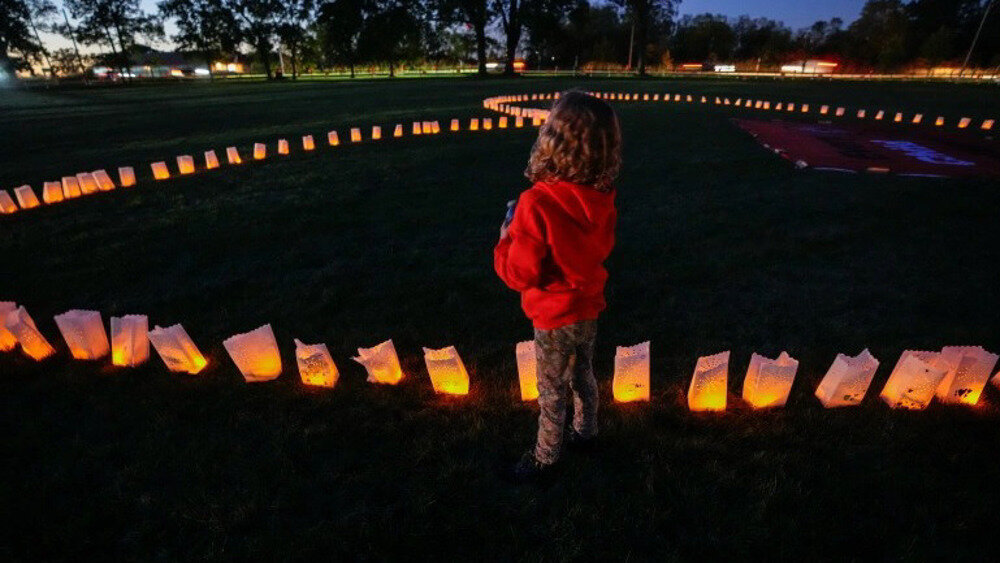Fresh pain for Natives in Canada as more graves found

TEHRAN- An Indigenous community in Canada's Saskatchewan province has announced the discovery of 54 unmarked graves at two former residential schools, adding to a growing tally of such burials that shocked the nation and the world last year.
Speaking at a Press Conference, Ted Quewezance, who is leading the Keeseekoose First Nation's search for graves near two former residential schools, Fort Pelly and St Phillip's, announced the new findings.
Canada’s indigenous community are using ground-penetrating radar to find the graves of former children who were forcibly taken away from their parents and sent to the residential school system where they were subject to different forms of torture.
Holding back tears, Quewezance says "Canadians still cannot believe a human being could treat another human being, especially a child, like the way we were treated”.
Quewezance, who is among the estimated 150,000 native children who attended the schools, says the discovery supports what people from the indigenous community have been saying for years "It was not that they could not hear, but they did not believe our survivors”.
The two schools, like all the others, were run by the Catholic Church on behalf of the federal government which backed them with money.
St. Philip's was operating from about 1928 to 1969 and has been described by survivors as hellish.
Fort Pelley was open as a residential school from 1905-13.
The Truth and Reconciliation Commission’s final report found St. Philip's school had a widespread problem with sexual and physical abuse.
In the report, Elaine Durocher gave an account of her time at St. Philip's school saying as soon as she entered the residential school "the abuse started right away."
"We were stripped, taken up to a dormitory, stripped. Our hair was sprayed … We were always praying. We were always on our knees. We were told we were little, stupid savages, and that they had to educate us”
Durocher adds "they were there to discipline you, teach you, beat you, rape you, molest you, but I never got an education”.
Another former St. Philip's child survivor, Fred Brass, told the commission that the institution was dominated by a violent regime of punishment.
He said he lived in fear of abuse day and night saying "I saw my brother with his face held to a hot steaming pipe and then getting burned on the arm by a supervisor”.
Chief Lee Kitchemonia, the project leader of the Keeseekoose's search says "these are not just instances where a principal or a teacher disciplined. These could potentially be murdered children, hidden. We don't know any of these answers” saying more investigation is needed.
Kitchemonia says the ground-penetrating radar technology suggests there are 42 gravesites at the grounds of Fort Pelly Residential School, and an additional 12 at St Phillip's.
Just weeks ago, the Williams Lake First Nation announced it had found evidence of 93 unmarked graves on the grounds of St Joseph Mission, another former residential school.
Similar discoveries were made last year at several other residential schools or institutions across Canada.
Since May 2021, more than 1,300 graves have been discovered.
Kitchemonia added that the community faces difficult days ahead saying "It's going to be a very tough time for our community, knowing that we had unmarked graves in our community, in our common areas, that we drive every day, that we walk every day”.
In total, some 150,000 First Nations indigenous children were taken from 1874 all the way to the year 1996 to these residential schools, set up to forcibly assimilate the country's Indigenous peoples.
Canada operates more than 130 residential schools.
The truth and reconciliation commission documented abuses at the schools and the deaths of more than 4,000 students mostly from malnutrition, disease and suicide among other issues, in a 2015 report calling it "cultural genocide."
Indigenous children spent months or years isolated from their families and were not just abused by headmasters and teachers but also stripped of their culture and language.
The wintry weather will delay the latest investigation, however, the shame of what many consecutive governments tried to hide from the Canadian public for decades will now live on forever following the discovery of the graves of children next to what used to be torture chambers for the nations indigenous kids.
Leave a Comment